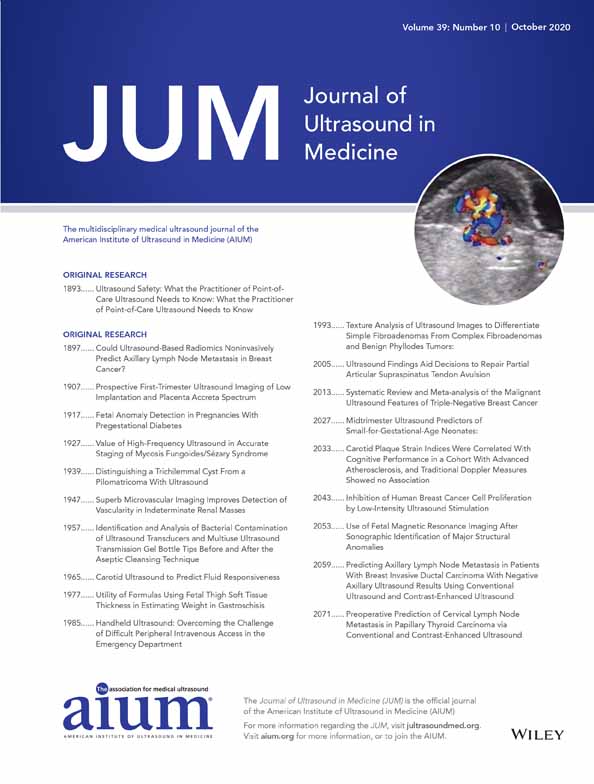Predicting Axillary Lymph Node Metastasis in Patients With Breast Invasive Ductal Carcinoma With Negative Axillary Ultrasound Results Using Conventional Ultrasound and Contrast-Enhanced Ultrasound
Abstract
Objectives
The purpose of this study was to establish a scoring system for predicting axillary lymph node metastasis (ALNM) in patients with breast invasive ductal carcinoma with negative axillary ultrasound (US) results.
Methods
In this retrospective study, 156 breast invasive ductal carcinoma lesions from 156 women were retrospectively enrolled. The features of conventional US and contrast-enhanced ultrasound (CEUS) qualitative enhancement patterns and quantitative enhancement parameters were analyzed. Subsequently, a scoring system was created by a multivariate logistic regression analysis.
Results
The results found that 60 patients (38%) showed ALNM. A scoring system was defined as risk score = 1.75 × (if lesion size ≥20 mm) + 1.93 × (if uncircumscribed margin shown on conventional US) + 1.77 × (if coarse or twisting penetrating vessels shown on CEUS). When the risk scores were less than 1.75, 1.75 to 1.93, 1.94 to 3.70, and 3.70 or higher, the risk rates of ALNM were 0% (0 of 9), 10.7% (5 of 46), 29.2% (14 of 48) and 77.4% (41 of 53), respectively. In comparison with conventional US alone, the scoring system using the combination of conventional US and CEUS showed better discrimination ability in terms of the area under the curve (0.830 versus 0.777; P = .037).
Conclusions
A scoring system based on conventional US and CEUS may improve the prediction of ALNM.




